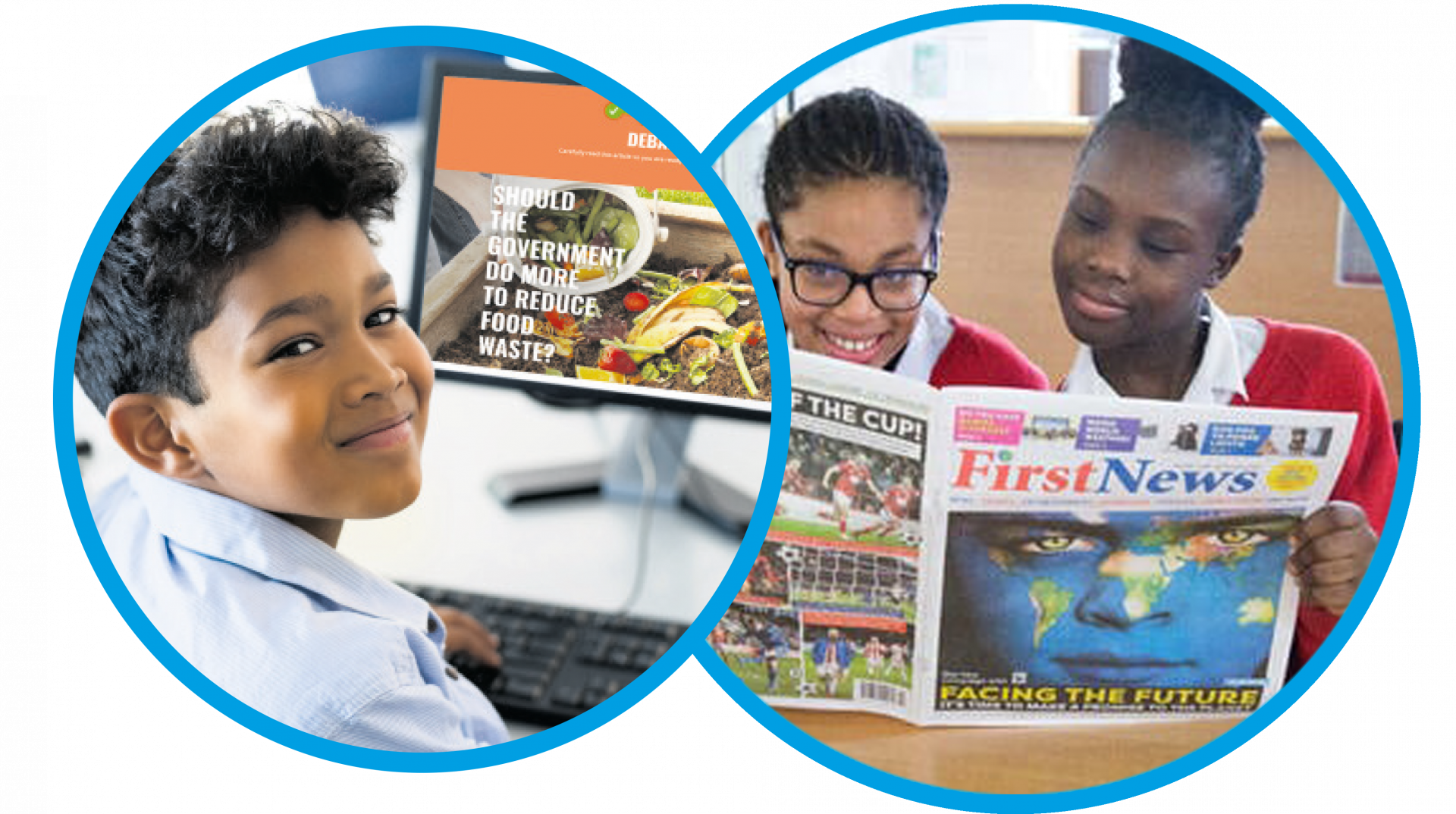Create Critically Literate News Readers
In today’s polarised atmosphere and with social media increasingly changing the way in which news is communicated, often allowing misinformation to seep into the public discourse, young people need the skills to identify reliable news sources and to question the source of a story.
First News Education is helping teaching professionals to bring news literacy into the classrooms, enabling students to understand and accurately question and discuss the news they digest, helping transform those pupils into positive, but critical, newspaper readers. Providing your pupils with a reliable and consistent source of news can inspire a position for regular reading and create an avenue to develop critical reading and comprehension skills.


DEVELOPING A NEWS READING COMMUNITY
The Critically Literate Newspaper Reader Model
Create a News Reading Community
Start by talking about the news on a weekly basis, using the latest stories in First News to help you kick off a discussion. Ask pupils to find stories in the newspaper that interest them or are important to their community and start classroom discussions. Encourage them to voice their opinions on the week’s news poll and your news reading community will grow and grow.
Help Pupils
Comprehend the News
To fully comprehend and unpack a news story, pupils need to use their developing reading strategies, combined with their previous knowledge of and interest in the topic being reported. Our weekly news comprehension activities support pupils with this process, helping them not just read and digest the news, but ensure they have truly unpicked, unravelled and understood the complexities of the text they are reading.
Teach The
News Code
News reporting comes with its own rules, terminology and traditions. If students know that news is organised into sections, they will know where to head for the news topics that interest them. Understanding the role of headlines, lead paragraphs, captions and quotes in news reporting will enable pupils to digest the news and will give them the skills required when they need to write in a journalistic style. Take a look at our free journalist writing resources to get you started.
Enable Pupils
to Analyse News
Understanding that journalists put ‘The News’ together and make choices on what they report is an important developmental step for pupils and will provide the grounding for them to develop critical news literacy skills. Students need to differentiate between reliable and unreliable sources of news.

86%
Of children want to know what is happening in the world, but are uncertain of where to find this information
(International Broadcasting Trust Report, Sophie Chalk, 2019)
50%
Of children are worried about not being able to spot fake news, highlighting the need to raise the profile of critical literacy across the curriculum
(The Commission on Fake News and the Teaching of Critical Literacy Skills, published 13 June 2018)
“The research model for developing critically literate newsreaders has been such a supportive resource for thinking about developing a news reading community… Students from Year 7 have engaged with this so thoughtfully, considering what it means to be a news reader and the importance of critical literacy skills. The social aspect of talking about news is key.”
Richard Long, English Lead Practitioner, St Michael’s Catholic School, Buckinghamshire






